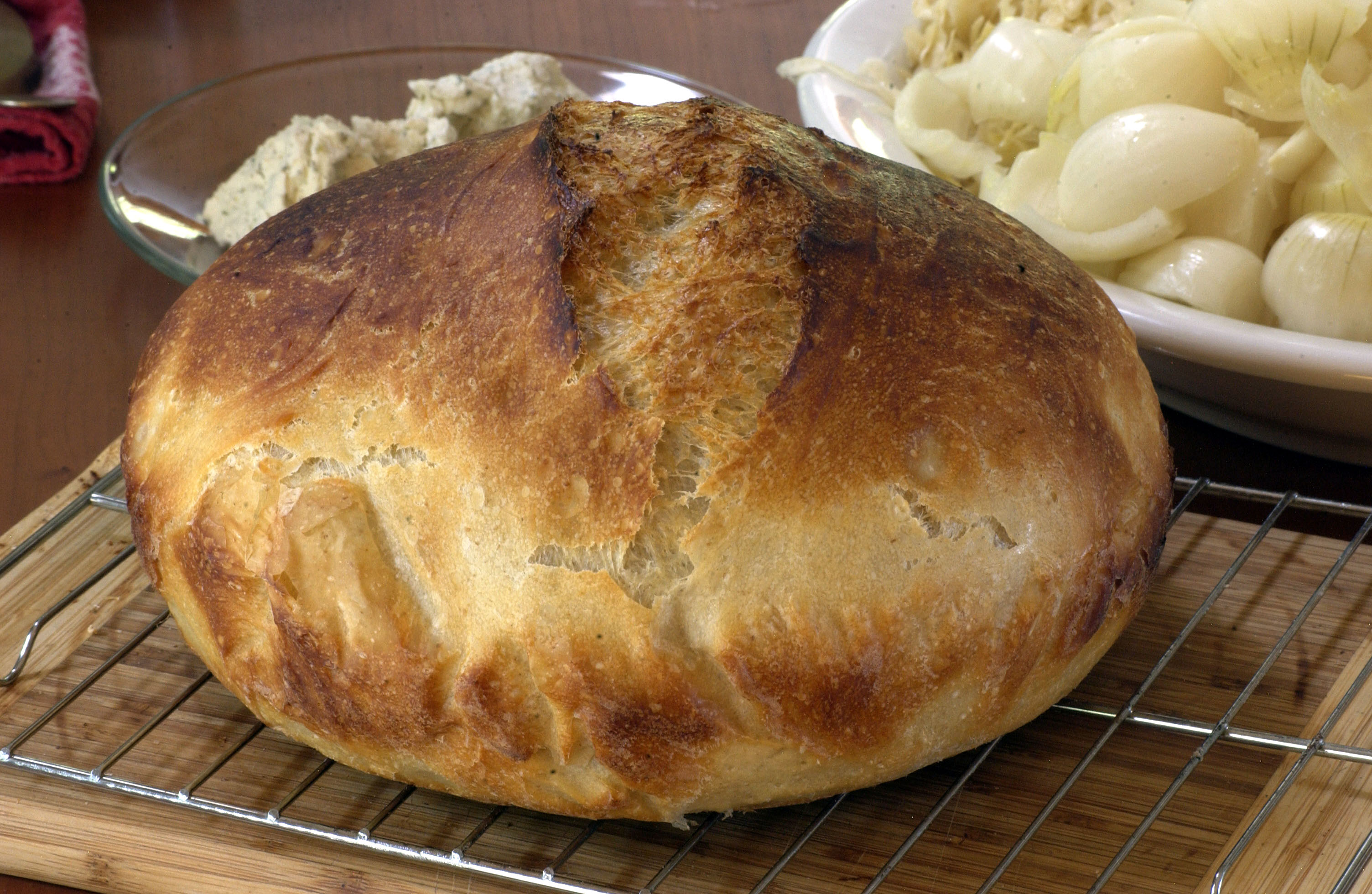
Click on photo for larger version
Any proper abbey (or so I have thought for a long time) ought to have its trademark bread. And any abbot worth his salt ought to be able to bake it. Not just any bread will do. There has to be something special about it. So gradually I have been refining the recipe for Acorn Abbey’s signature loaf.
I just used the dreaded word “recipe.” I’ve been making bread for decades, measuring vaguely and just baking out of experience. But with the rustic sourdough loaves, I have been measuring, by weight, using a kitchen scale. This is because I’ve found that to get consistent results, one needs to control the “hydration” of bread — that is, the ratio of flour to water. Abbey bread at present is 85 percent hydration (100 parts flour to 85 parts water, by weight). Though wetter bread would be nicer, it’s much harder to handle. I probably will experiment with trying to increase the hydration a few percent and see how it goes.
As I’ve mentioned in previous posts, the abbey bread is inspired by Michael Pollan’s book Cooked, in which the bread concept is based on the sourdough bread at Tartine bakery in San Francisco. It’s baked in a Dutch oven.
There was one part of Pollan’s method that just did not work for me. He gives the dough its final proofing in a bowl with the loaf face down. He upends the bowl over the Dutch oven and lets it plop. I found that unworkable. What if the dough sticks to the bowl? What if the dough loses its loft from the fall? I’ve settled on a method which is a bit more trouble but which is reliable. I line the proofing bowl with wide strips of parchment paper, then set the loaf right side up on the parchment paper for the final proofing. When it’s ready for the Dutch oven, I lift the loaf by the ends of the parchment paper and set it gently into Dutch oven.
The total amount of time to make decent sourdough bread is not that great. But one must start the night before, and the bread requires regular attention on baking day. The abbey bread is usually done by 5 p.m.
I’ve settled on a kind of Mediterranean schedule of baking every three days. Strangely enough, this has reduced the net amount of bread, and therefore carbs, consumed at the abbey. This is because I’ve stopped making biscuits and rolls, all of which tend to get eaten at one meal. On day 1, the bread is served warm for supper. On days 2 and 3 it comes back as toast or in slices at supper. If there is any left (rare), then the chickens get it.
Post a Comment